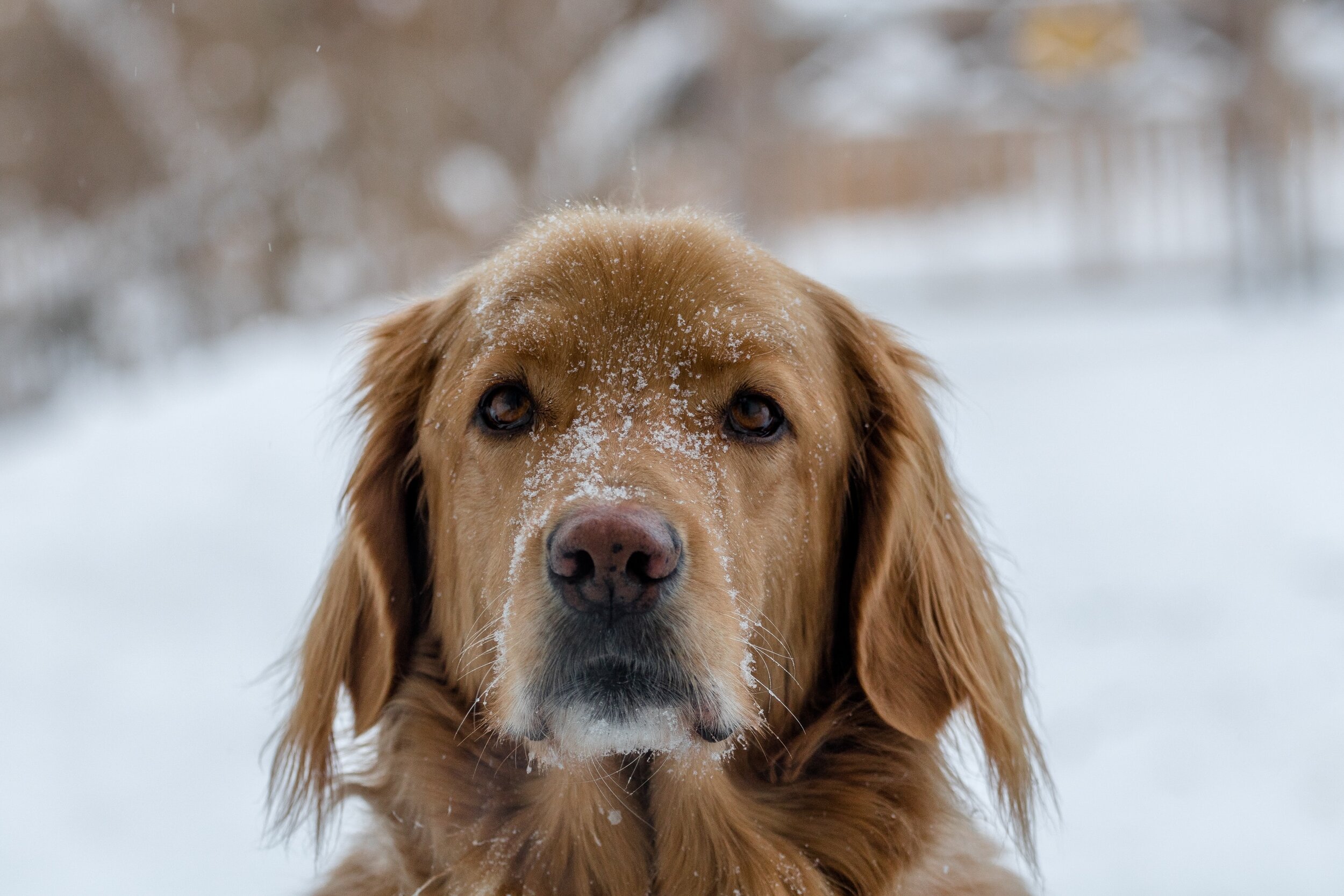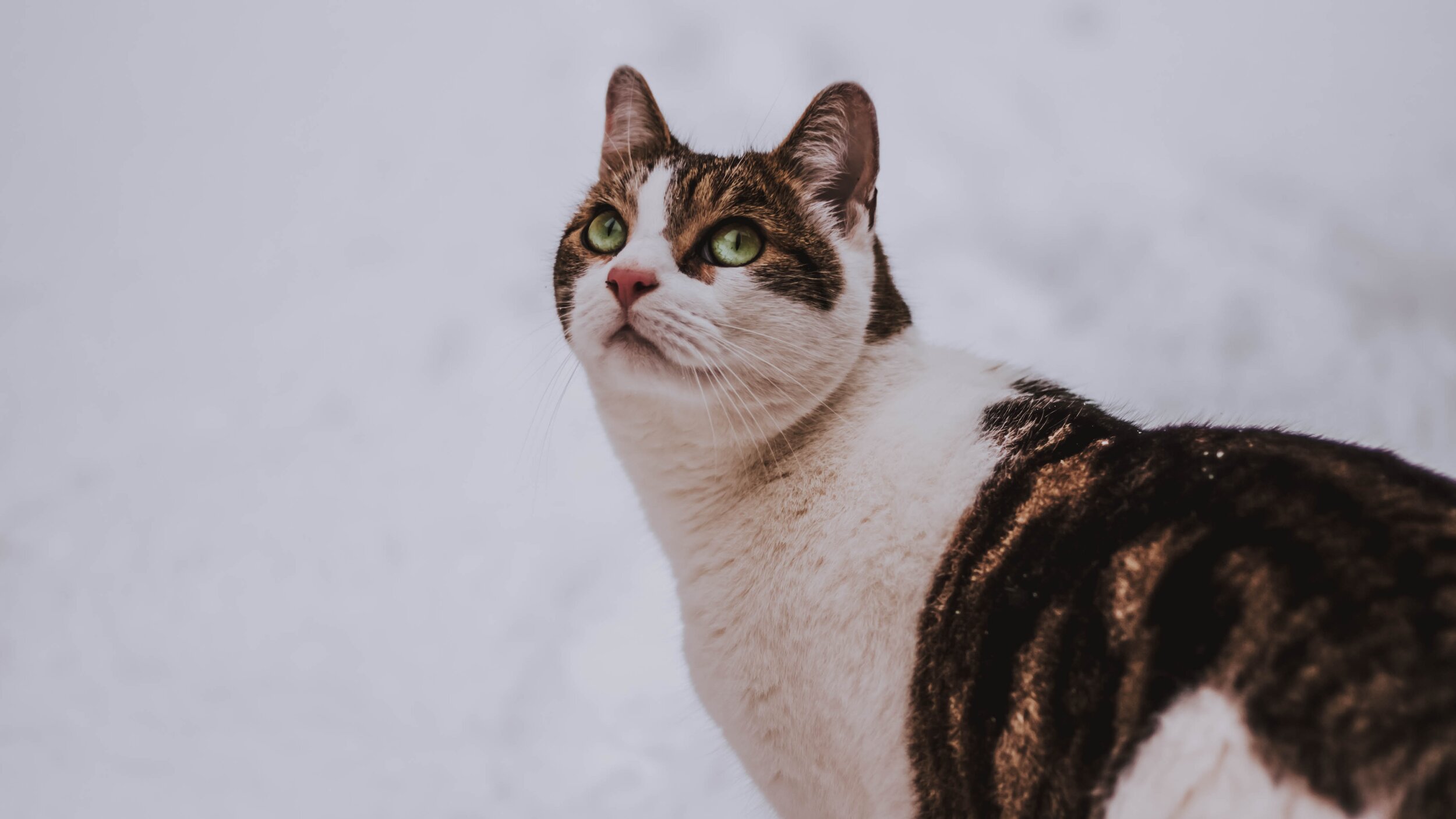
OUT OF THE COLD
By: Kasey Rawlings; GBHS Outreach & Education Coordinator
Have you ever heard the saying, "if it is too cold for you, it is too cold for them?" Well, it's true! Dogs and cats have fur, which keeps them a little warmer than us humans, but they should not be left outside in freezing temperatures. We're going to talk a little bit about how to keep your pet safe when going out for walks, what to do when you see a pet that has been left outside in freezing temperatures, who to call when you see a homeless pet, and how to help community cats through the winter!
If you have a dog, you have to take them for walks, even when it's cold outside! There are some things that you can do to keep your pet safe on those cold-weather walks. First, don't stay out too long, if you're feeling cold then your dog probably is too - take more short walks instead of fewer long walks. Make sure to wipe your dog's paws, legs, and bellies off with a dry towel when you come back inside. Sometimes roads and sidewalks are treated to keep from freezing, and those chemicals can hurt your pet's skin.
Don't forget to grab sweaters (for you and your dog) before you head outside!
What do you do if you see that an outside dog doesn't have adequate shelter, food or water, or even frozen water? If you see something, say something! Contact your local law enforcement and give them the details and ask for a welfare check for the animal. When you see a homeless or stray pet, contact your local animal control facility and report the details!
What are the details?
Whenever you contact law enforcement or animal control - the details that you are able to give are very important! Those details are what you saw, when you saw it, where it happened, and who - if you know!
Community Cat Care

Community cats live outdoors and are usually not socialized, which means that they avoid humans. They can live full and healthy lives with their cat families, also called colonies, in their outdoor home.
You can help community cats this Fall and Winter by building shelters that are warm and dry and give these community cats a break from the cold!
There's a few things that are very important about your cat shelter:
It needs to be waterproof; the inside of the shelter doesn't need to hold any water and be safe from rain or snow.
It needs to have insulation; materials like straw, that will hold heat. Towels and blankets are not good for insulation because they hold water.
It needs to be safe for a cat to live in; no sharp edges and nothing that the cat can eat/chew that will make them sick.
What do you do with the shelters once you've made them?
If you have community cats in your neighborhood, you can put the shelters out for them - just stay off of private property unless you have permission from the owner. You can also donate them to your local shelter so they can distribute them out in the community.
Want to build your own Community Cat winter shelter? Click here to learn how:
Have QUESTIONS or need help this winter? Contact Us!

Did you know that the Greater Birmingham Humane Society gives away donated dog houses and community cat shelters for free to people in the community that are in need of a warm space for their pets? If you would like to make a dog or cat shelter to donate to the shelter, check out the links below! If you have a shelter that you no longer need and would like to donate, please contact the shelter or bring it to our Snow Drive facility!


